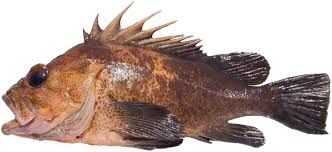Quillback Rockfish

Species Details
Sebastes Maliger
Sebastidae
Scorpaeniformes
Reefs, inshore, offshore
2 - 7 lbs.
24"
Quillback Rockfish (Sebastes maliger) Fish Description
Quillback Rockfish, or the quillback seaperch, is a species similar to the brown rockfish, which they are often mistaken as, and also copper rockfish, and the China rockfish.
They have sharp, venomous quills or spines on their dorsal fins, which attributes to their name. Located at the base of their spines are their venomous glands, which excrete poisons into their spines. This defense mechanism protects them from predators, but they are not known to be extremely toxic to humans, however, it can still cause pains and infection,
Quillback rockfish have mottled orange-brown bodies that aid them in blending in their surroundings of rocky bottom reefs and boulder barriers, which they commonly inhabit.
Diet and Size
Quillback rockfish commonly consumes herring, demersal, pelagic crustaceans, crabs, amphipods, euphausiids, and copepods. They generally feed at midday.
The average adult Quillback rockfish weighs between 2 -7 lbs., and can grow up to the maximum reported length of 24 in.
Interesting Facts about Quillback Rockfish
Rockfish can move through different depths of water, because they have a gland that helps them produce and absorb gas when needed, to expand and deflate their swim bladder. However, this bladder cannot adjust as quickly if, for example, the rockfish was caught from a depth of 60 ft and abruptly pulled to the surface, as the change in water pressure would overfill with air, causing damage to the other organs of the rockfish when it pushes out the fish’s stomach out of its mouth.
Quillback Rockfish - Fishing Techniques
Oftenly Quillback rockfish are caught from deep, cold water through bottom fishing with herring or jigging. Anglers mostly land rockfish in deep water from either using bottom-fishing tactics or mid-water drifting. Rockfish aren’t usually known for their large size, as they range from 2 to 7 lbs., nor provide great fight stories, but the larger ones of their species may provide to be a good game fish but are often found in the deeper waters.
They can also be caught by casting lures in areas close to where they inhabit. And fly fishing for Quillback rockfish can become an option when fishing near the shores, for the more juvenile rockfish.
Habitat and Distribution
Similar to other rockfish species, Quillback rockfish live in the deeper parts of the waters, perched on rocks or hidden in rock crevices. Young quillbacks, however, prefer to stay along the shores, in reefs, sand, and eelgrass. Mainly, Quillback rockfish are found to be solitary creatures, rarely seen in groups. Despite the preference for these rockfish to stay close to rocks, kelps, coral, and other crevices and rarely found in open spaces, they are not territorial.
Dependent on location, they are minimally or moderately migratory. They maintain small ranges of around 30 m on the high-relief rocky reefs of Puget Sound, Washington. All while in low-relief reefs, they occupy a much larger area, around 400 to 1,500 m.
At times, they may migrate seasonally towards low-relief reefs when there is a presence of kelp, as high densities tend to be concurrent with higher rates of plant growth.
The Quillback rockfish predominantly lives along the Pacific coast, from the Gulf of Alaska to the northern Channel Islands of Southern California, occupying a diverse range of habitats.







